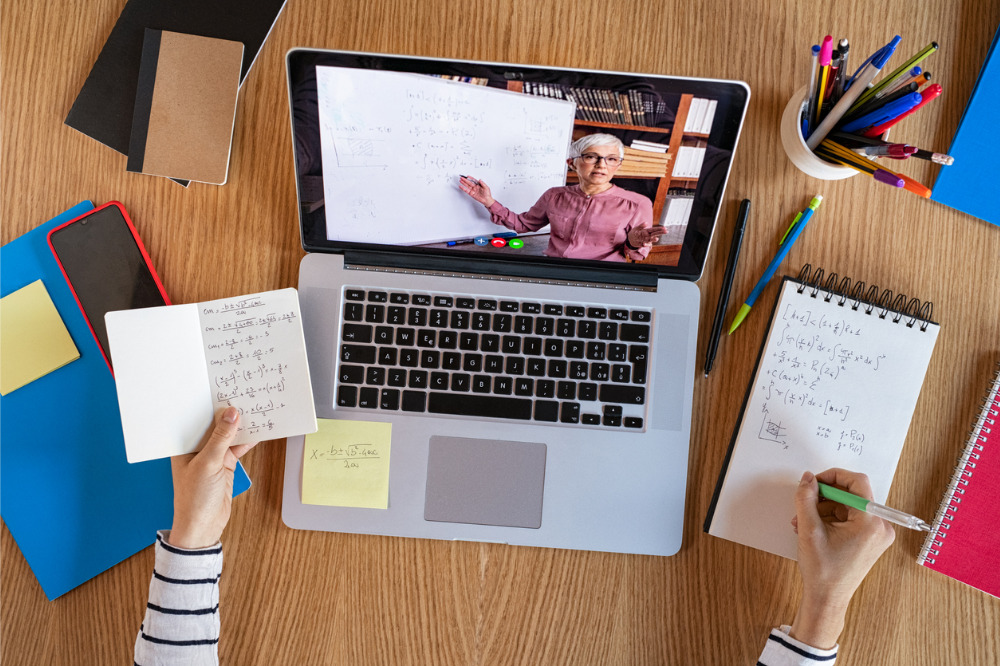
The question of how kids should learn in the classroom has given rise to its fare of controversial viewpoints.
Topics including the usage of mobile phones for learning, the practice of phonics to teach literacy and the prospect of CCTV cameras in classrooms to ensure child safety are often the cause of heated debate.
Now one expert from the Australian Catholic University is suggesting that students could be better off learning on YouTube or Zoom than in the classroom.
Dr Michael Noetel from ACU’s School of Behavioural and Health Sciences recently led a systematic review of 8,000 students who were surveyed over whether fears over the quality of online teaching had any foundation.
“If anything, we found that educators deliver better learning when using videos instead of face-to-face classes,” Dr Noetel told The Educator.
He says there are three main reasons videos works well compared with face-to-face teaching.
“It’s easier to design video that works with the brains of students; students have the control to learn when they want and how fast they want; and videos can give an authentic perspective that can’t easily be replicated in class,” he said.
“Students have two main channels for learning: what they see and what they hear. Lots of different ways of learning can be built to use both channels well, but we teachers aren’t perfect: we make mistakes when giving live classes, and can edit ourselves on video”.
Dr Noetel said this means educators can more carefully present information so it’s easy to understand.
And it’s not just teachers who have more control when learning with video. Dr Noetel says students also get more control this way.
“They can speed us up, slow us down, stop to take notes, or have a break. All these things allow students to regulate the amount of information they’re taking in so they can master content without getting overwhelmed,” he said.
“Pragmatically, they can also learn where they want, when they want, meaning life is less likely to get in the way of learning”.
Dr Noetel said that while teachers can’t always give students a realistic view of what they’re teaching in class, videos can show them the real thing.
“If you’re learning to do CPR or the physics of an explosion, we can only do demonstrations in class – hopefully, anyway,” he said.
“They probably also see the demonstration from a distance, in a room with dozens of other students. In contrast, videos allow for students to see real demonstrations, up-close and personal. All of these things make videos a better learning experience for students”.
Dr Noetel also addressed concerns that teachers who are delivering classes remotely can’t effectively monitor student engagement from behind a pane of glass.
“Just because classes are face to face, doesn’t mean they’re interactive, and just because they’re online, doesn’t mean they’re passive,” he said.
“In some face to face classes, teachers are at the front, presenting information for the first time. In the same way, just plonking videos on your learning management system makes it hard to track engagement”.
Dr Noetel said that instead, when using videos, teachers can do the equivalent of walking around the class.
“Our review found that teachers can usually make video just as interactive as class. Websites like Kahn Academy, EdPuzzle, and H5P do a great job of showing how you can make videos interactive by asking lots of questions with quality feedback,” he said.
“Most of these websites allow teachers to track student progress so we can provide support to students who are struggling, and encouragement to those doing well”.
Dr Noetel said most teachers will usually follow the videos up with a hands-on activity that gives accountability too, with the video as a worked example.
“Videos are also not a panacea – you can’t use them for everything – but they are an important and effective tool in the teachers kit”.


